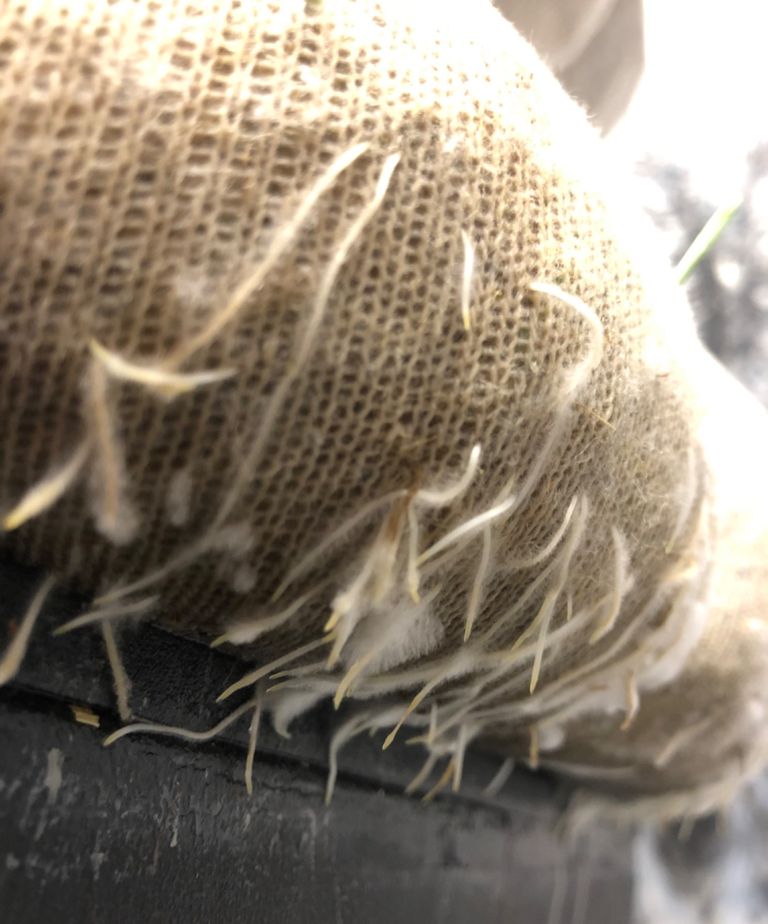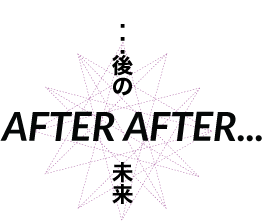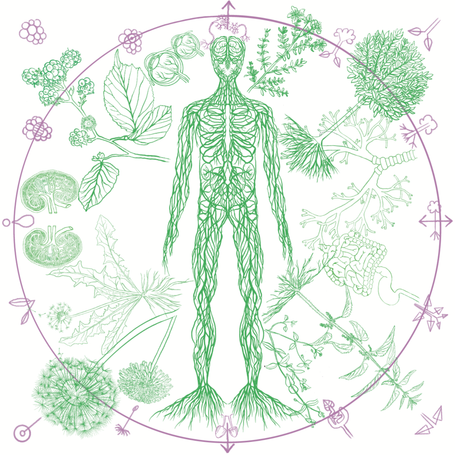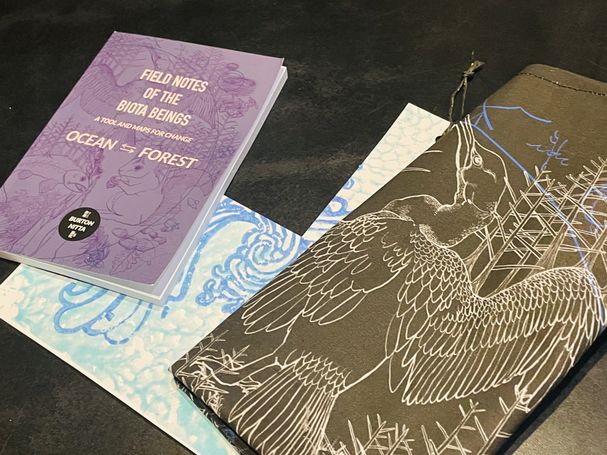11
MAR
2024
EMBRACING THE UNEXPECCTED AND IN-BETWEENNESS
The studio became a space for the unexpected. Once the artwork came to life, it invited the unknown into the work and space.
The artwork becomes a collaboration. As such, opening the studio door is an encounter with the life of the artwork beyond the intentional.

On entering the studio, we were filled with anticipation for the uncertain activity of life within the work since the day before. The artwork from the series called In-between sat immediately in front of the open door. The smell of it was a sign of its development, as was the visual evidence. Its aroma of wet soil and a hint of spring garden fragrance told us of the development.
From afar, the piece was a mottled range of beige, brown, yellow and orange hues. The willow whips growing through the work, nestling within a folded membrane, bind the structure and hold aloft spangles of fluffy pink blushed buds — a promise of life bound lying in wait.
On closer inspection, pale green shoots emerge from the cloth surface. They sprout from the medium inside and push through the weave of the fabric. White hairlike roots creep from the underside. These green shoots and roots are a surprise. Their origin is probably from stray wheat grains within the straw that fill the membrane intended as a growing medium for fungi mycelium. In some forms of experimentation, such as in the sciences, researchers might consider this unplanned element of the wheat as contamination—an unknown and unintentional addition.
For the intention of the work, in this case, the wheat gives opportunities to probe the living ecologies within the making of the artwork. Here, we gain insights into how the lives of the organisms intermingle and overlap. How each element informs and shapes the lives of others, often in unexpected ways.
The piece is a work in progress, a habitat, and an interface for collaboration with other species. Here, plants, microbes, bacteria and fungi intermingle into the starting point of a new relationship. The structure investigates the signal pathways between different species, often building resilience and resourcefulness in environments of stress and change. This recent piece explores how humans can intersect these processes and the communication that emerges between symbiotic partners across species boundaries. As the communities of the organisms in the artwork mature, we want to see if we can experience and pick up the signals. The selection of organisms in the structure all show potential in our research to connect with humans and even influence the behaviour of each other. The work's intention serves as an instrument to help us tune into these signals. The piece has a grander aim - once we make sense of these signals, can we build upon and enhance our innate 'ecological intelligence'?
On returning to the unintentional wheat shoots that now sprout from the form, we find a challenge to our human assumptions. With the plants emerging from the piece, we analyse our intentions and the possibilities brought by chance. We confront tendencies for control and how we give space to welcome the unknown into the work.
We initially assembled a selection of key organisms, including willow, oyster fungi mycelium, and soil bacteria. The addition of the wheat plants could be called contamination. However, through the lens of the work, we redefine the term "contamination". Instead, we explore how these unseeded plants could be seen as diverse ecologies of different species woven together in tapestries of biodiversity.
Contamination in experimentation is often undesirable in the process of measurement, testing, controlling conditions environment and in isolating to observe subjects. In contrast, we question what the addition of the plants means for the art-making experimentation and the context of the piece exploring ecological perspectives. The unwelcome becomes welcome. Instead of isolation, we are exploring the intermingling of the 'many'. What opportunities might we miss when we view the unintentional as undesirable? Or is this growth another valid route for the progress of the piece and an important finding?
When we get to the core, we encounter understandings of success and failure. We come headlong into questions of: how do we reframe the unknown, relinquish control, readjust aesthetic and conceptual judgement, challenge hierarchies of desirability and embrace inconsistencies?
Because of our current research and working with living components of the work, there will be times of growth, death, decay and possible regeneration. In the process, we open up possibilities to engage with other species in the work, to change our understanding of this engagement and to test the boundaries of what's possible. In the investigation, the unintentional emergence of the plant growth is not only an additional member of 'the many' partners in the work, but also an opportunity to learn about ourselves.


